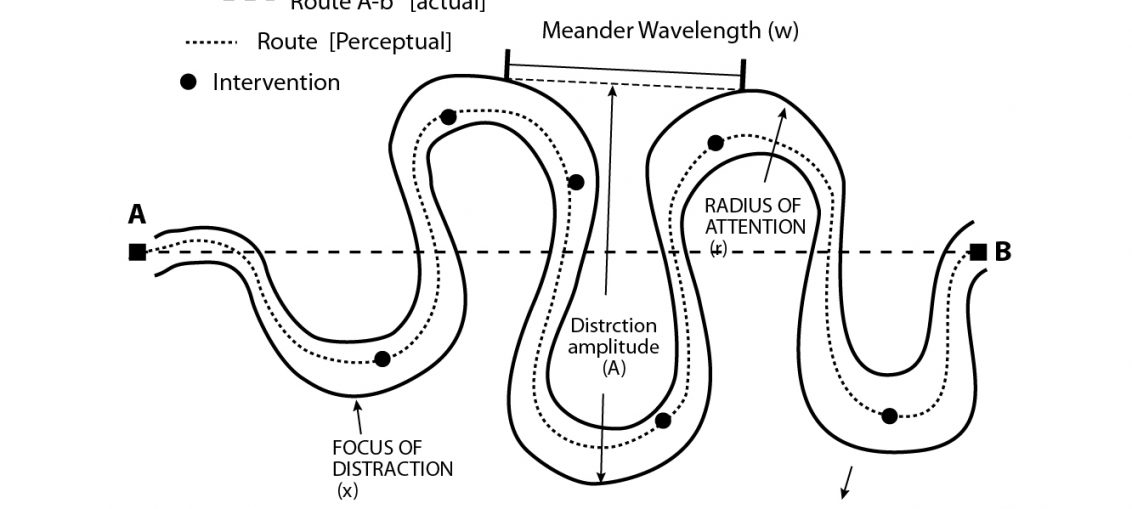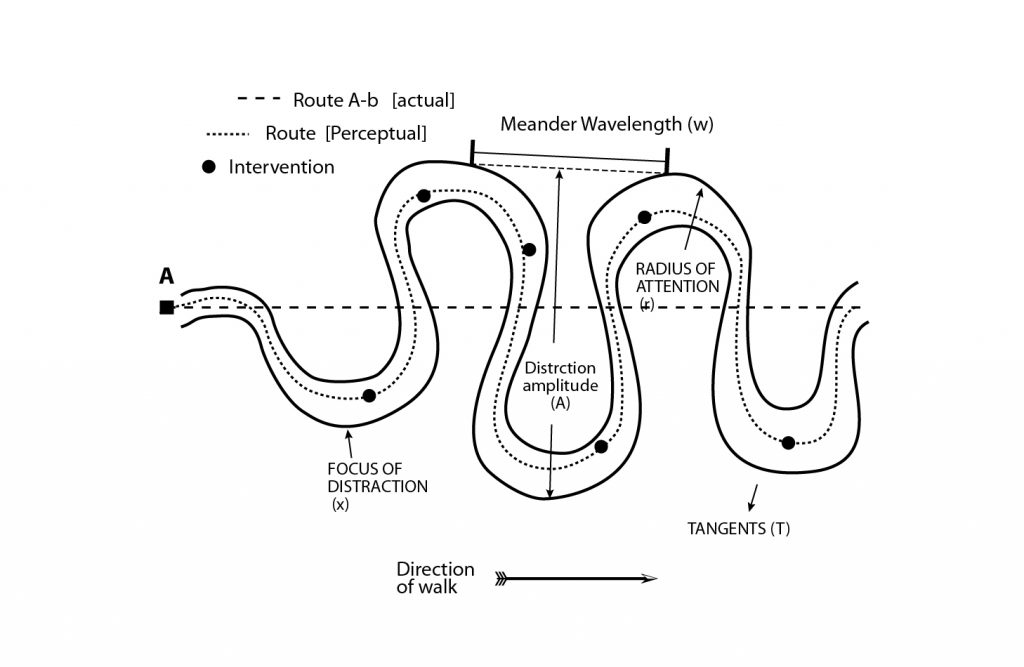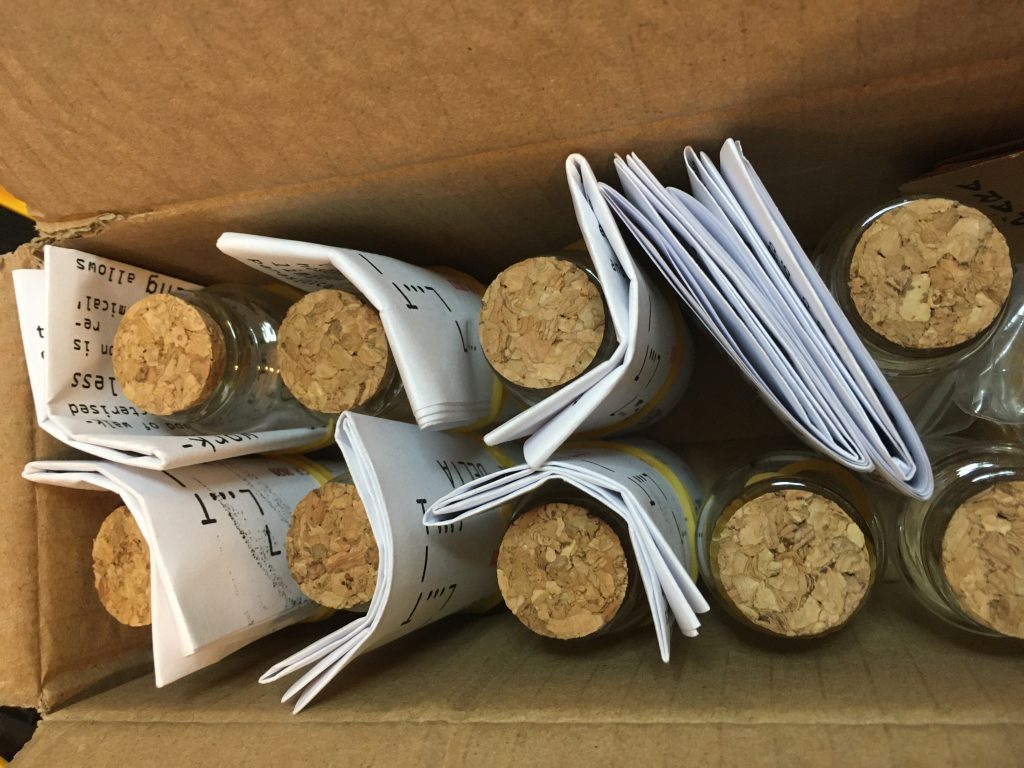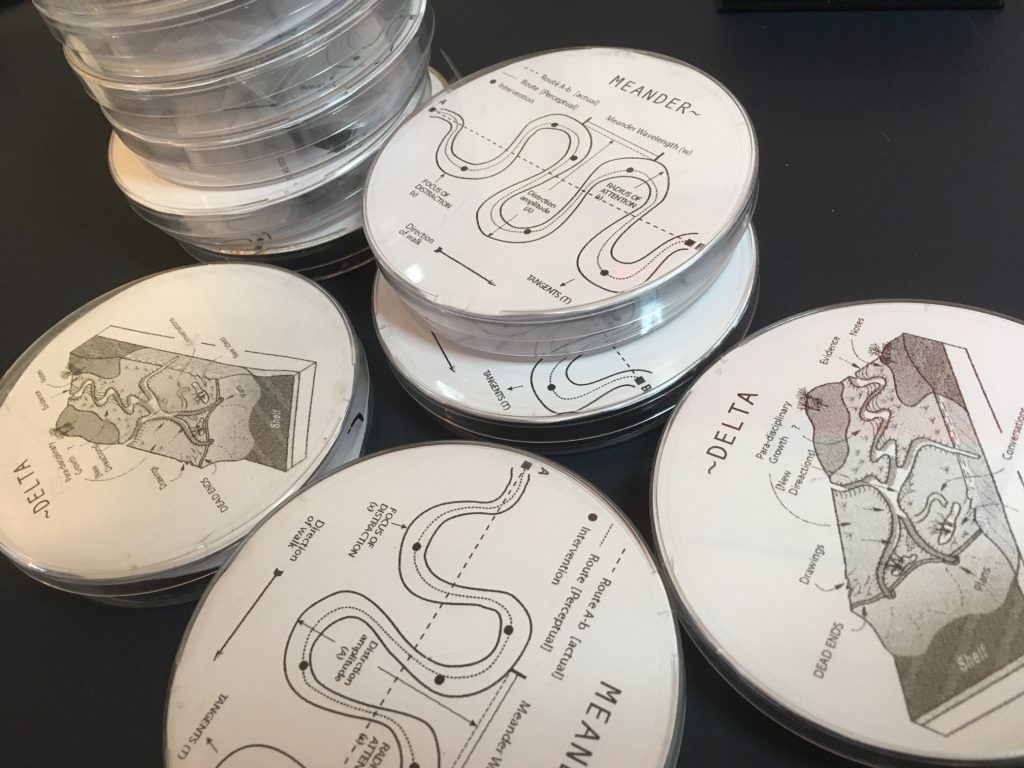
Meandering is an experiential research method enacted through walking in the natural [or urban] environment whist being tasked with a specific activity [collecting, experimenting, sampling the environment]. The aim is that this process may lead to new ideas and discussions which cause the participants to meander from the planned course of action and in doing so reveal alternative routes and different ways of looking. During the meander, notes are made, and the process is recorded; The sorting of residual material generated become a “Delta object” an archive of the event.
Meander
1. To slowly wander from a given course.
2. (of a river or road) follow a winding course
3. a journey that has no particular direction:
~Delta
1. The accumulation and sorting of material as a result of the movement of water, typically at the mouth of a river.
2. A difference between two things or values.
Meander (walk)
The initial meander is ideally an interdisciplinary collaborative group action; a purposeful turbulation. It should resemble a field trip, more than a ramble, a process of research; of extraction and collection. This lends itself well (but is not limited to) to ecological or geological experiments. The Meander~Delta is differentiated from a Situationist ‘derive’ in that it encompasses (but is not limited to) the natural environment. It also uses a predefined route from which participants are encouraged to meander through the actions conversations that occur. A meander is generally considered to be a journey that has no particular direction. However, consider the active and generative process at work:
1. Cutting. The meandering stream finds its own way through the environment. It cuts away at its own banks, removing materials, often exposing the geological substructure of the soil and rock under the surface. Likewise, the Meander~Delta should expose the unseen properties of a site through active intervention.
2. Slowness. The process of meandering naturally lengthens the stream and slows the flow rate of the river, affording safe environments, often rich in wildlife. Similarly, the meander should aim to cultivate an environment [space and time] ideal for collaboration and discussion through a slowness afforded by active intervention.
3. Collection. The meandering process naturally gathers up material that is moved along the stream and later sorted and deposited elsewhere, in parts of the stream where the flow rate reduces forming ~Delta. These emergent temporal land masses often provide ecologically diverse environments, safe nesting grounds, or fertile soils for plant growth.
~Delta (object)
During a Meander, participants are tasked with documenting their experiences in various ways; making recordings, photographs, drawings or detailed notes during the meander. These artefacts undergo a selection process and become the ~Delta object which forms a record of the event. The parameters of the final accumulated mass, the delta, should be pre-defined and agreed. This might be as simple as a blog post, photographs and writing, but more ideal is the physical archiving of the materials. The resultant ~Delta object is defined by the essential qualities of the material collected or generated, and the decisions of those tasked with its curation, and editing.
The Meander~Delta is a process of making time and space for discussion, action and interaction. The process enables the collection and transmission of new material, opening new spaces [~delta] rich and fertile grounds for practice and discussion. A delta provides a fertile creative environment, ideal for social interaction, and collaboration between different fields of specialisation, supporting the ongoing development of new evolving para-disciplinary assemblages.”
From ‘The Pressure of Ideas/Notes on Para-Lab’
See a Meander delta workshop outline: A proposal for para lab inspired by Proximity
Other examples of this in action are listed below…

Possible examples of a Meander~Delta type action…

